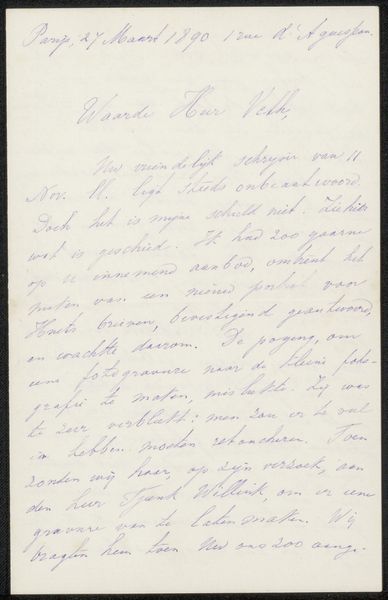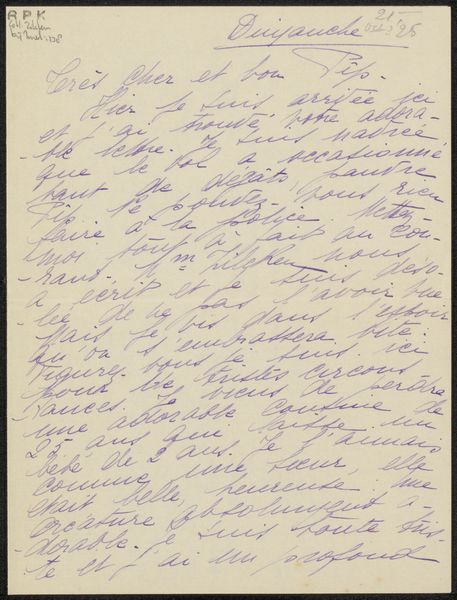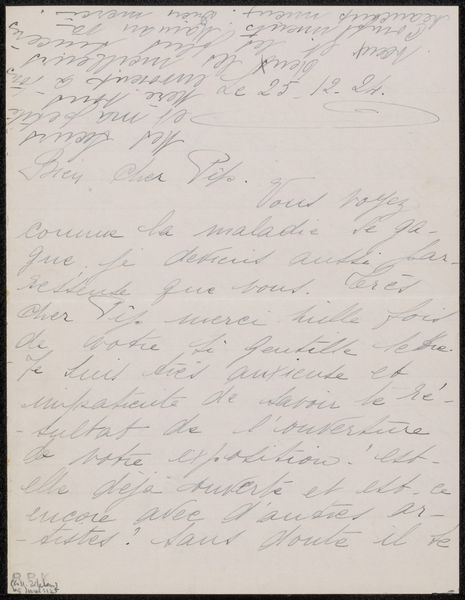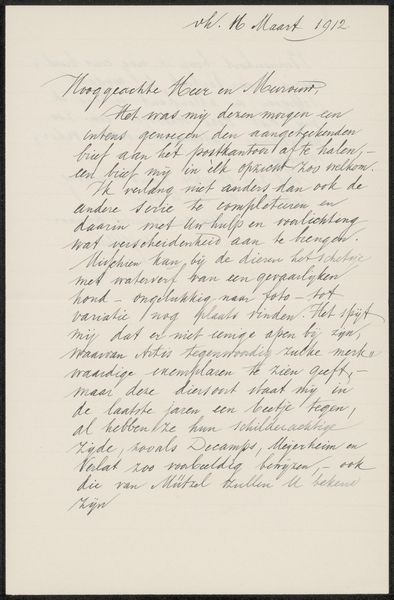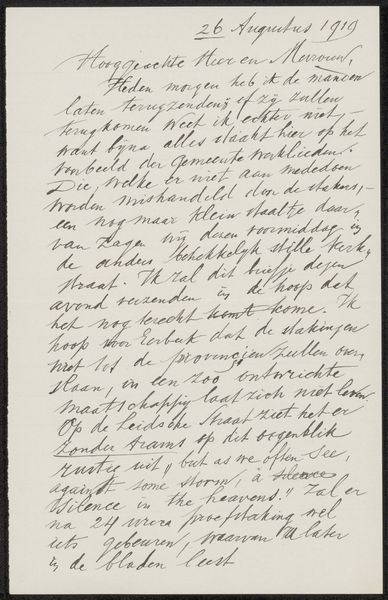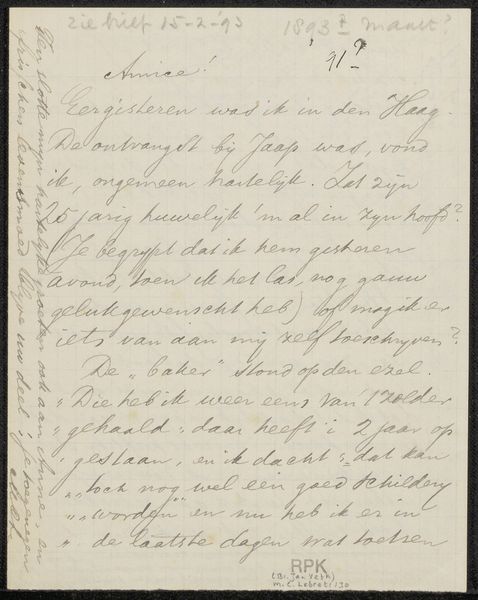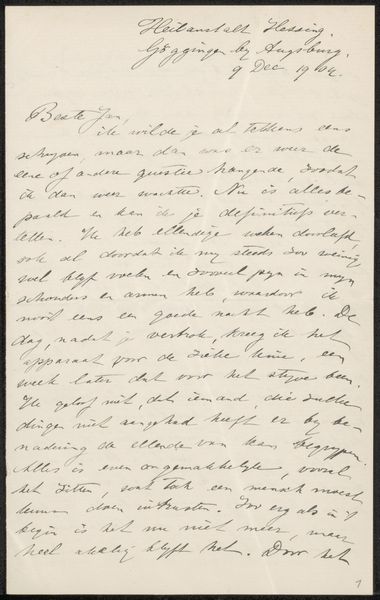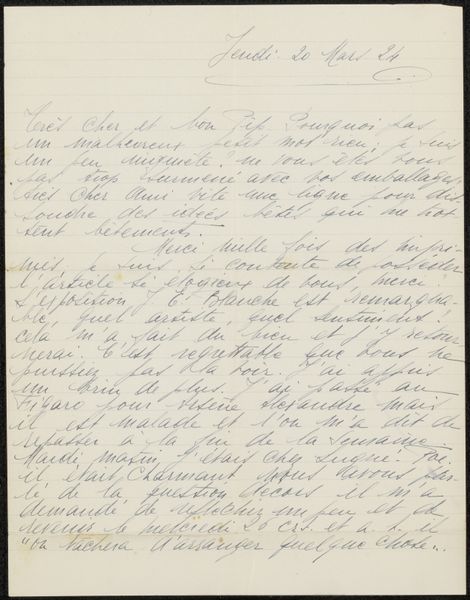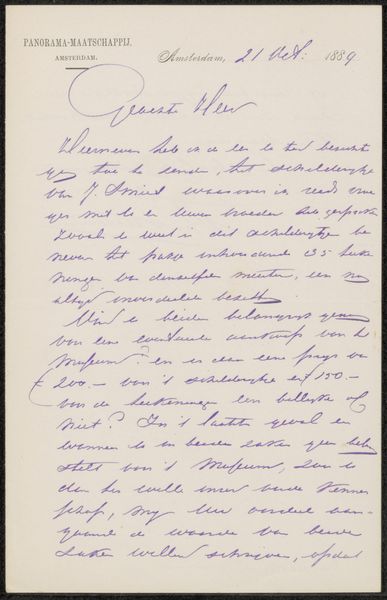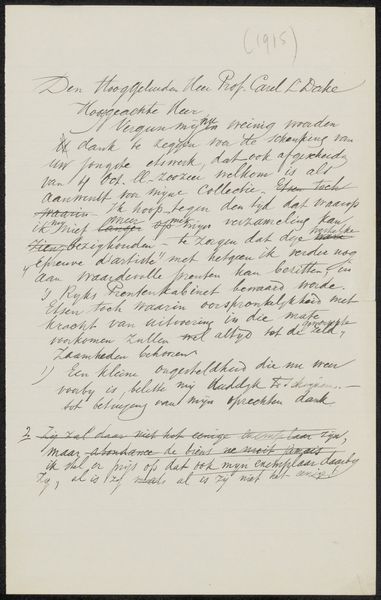
paper, ink, pen
#
script typography
#
hand-lettering
#
hand drawn type
#
hand lettering
#
paper
#
ink
#
pen work
#
pen
#
calligraphy
Copyright: Rijks Museum: Open Domain
Curator: This piece is entitled "Brief aan anoniem," or "Letter to Anonymous," created by Nico van Harpen between 1904 and 1906. It's ink on paper, showcasing a beautiful example of calligraphy. Editor: My first thought is how delicate it appears. The writing almost floats on the page, like whispers from the past. It feels intensely personal, despite being addressed to "anonymous." Curator: Absolutely, the materiality of the ink and paper really enhance that sense of intimacy. The choice of pen, the specific texture of the paper...these elements contribute to its handmade quality. One can almost feel the artist's hand guiding the words. It reminds us that communication at the time was still very tactile and directly linked to the physical labor involved in its making. Editor: It definitely evokes a sense of history, doesn't it? A carefully penned letter in a time of societal shifts... What might that have meant to the recipient? Was it a gesture of solidarity, a plea for understanding, or simply a note? Considering its anonymity, I wonder if the artist was engaging in some sort of activism or underground communication. Curator: That's a compelling interpretation. We can imagine how limited their access to mass publishing must have been. They relied entirely on this kind of craftsmanship to get their message through. Editor: It makes you appreciate the effort that went into sharing ideas back then. It prompts us to contemplate the unsung narratives, the voiceless and forgotten within broader historical events. How did their individual actions, however subtle, contribute to change? What are the letters lost and found within archives from all sorts of struggles? Curator: Indeed. This letter encourages us to look beyond famous historical figures and consider how craft, specifically calligraphy, becomes a method for individual expression within historical structures. Editor: It serves as a humble, tangible link to the lives of ordinary individuals. Looking at it reminds us to honor their persistence and remember the past experiences that have shaped our present. Curator: I find myself contemplating the evolution of handwriting itself. This delicate script contrasts so sharply with our current digital communications. It reveals how production methods shape and communicate in meaningful ways. Editor: Me too. Thinking about who penned this, and their role in shaping community and potentially even social movements makes me hopeful. We have a future full of opportunities to impact history if we continue in that vein.
Comments
No comments
Be the first to comment and join the conversation on the ultimate creative platform.

